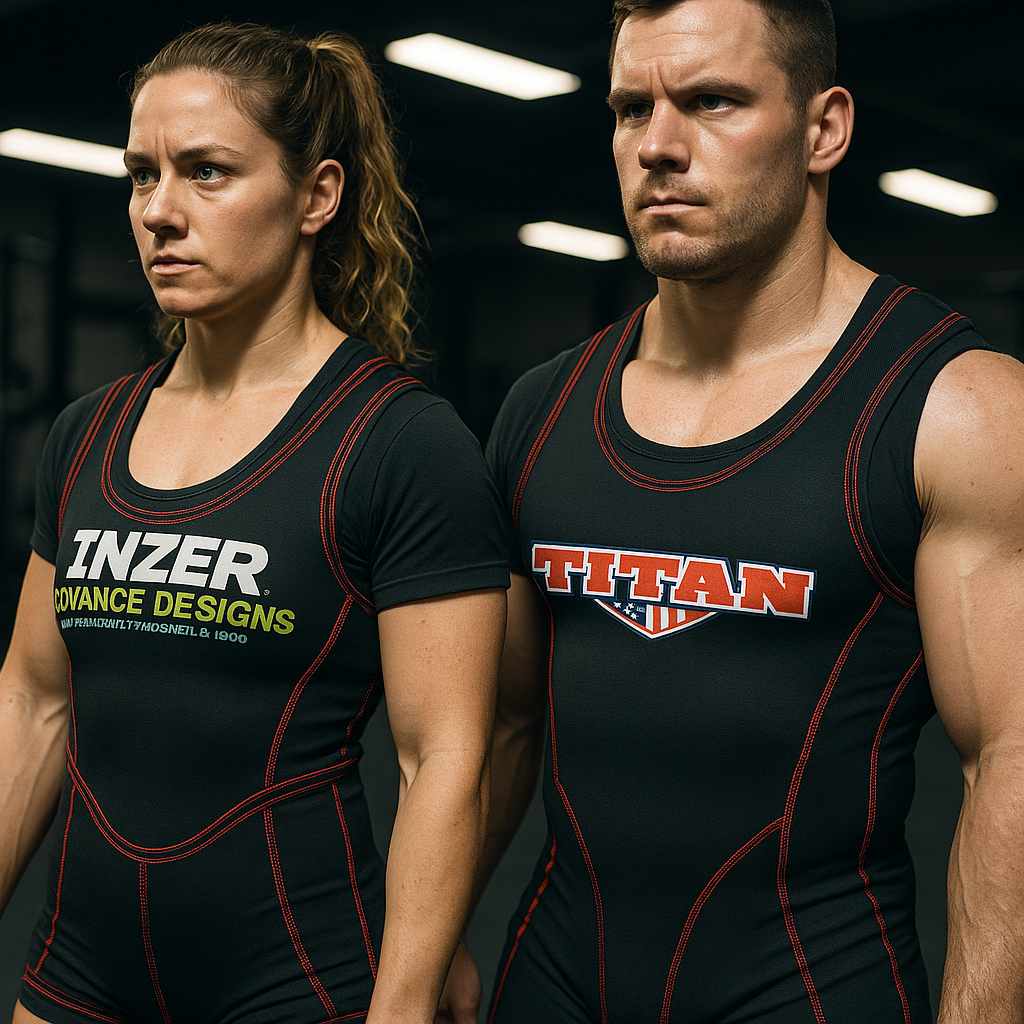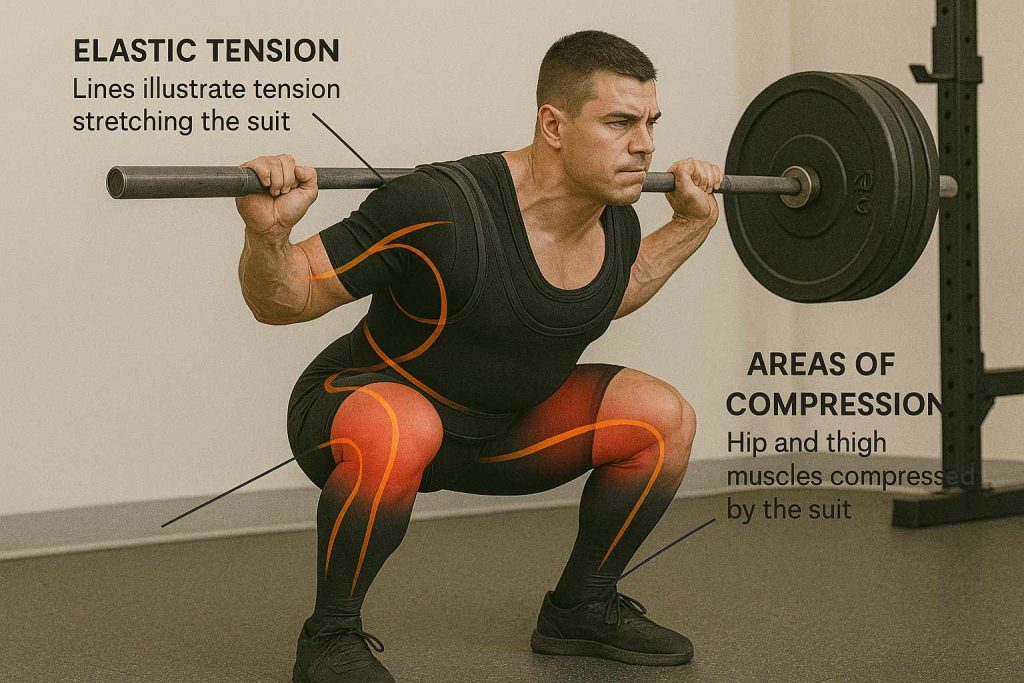A squat suit is a specialized supportive garment used by powerlifters to lift heavier weights safely and efficiently during the squat. If you’re serious about maximizing your squat or competing in equipped powerlifting, understanding squat suits—their purpose, benefits, and how to choose the right size—can dramatically improve your performance.
Squat suits offer essential support and protection for heavy squatting, making them a crucial piece of equipment for advanced lifters. This guide covers exactly what a squat suit is, how it works, how to use one, sizing tips, and what to look for when buying.

What Is a Squat Suit?
A squat suit is a one-piece, extremely tight garment made from tough, non-stretch polyester or canvas. It’s worn during equipped powerlifting competitions to provide added support and mechanical advantage during the squat.
- Designed for performance: The thick, stiff material “stores” elastic energy as you descend and “rebounds” you upward out of the hole.
- Purpose: Allows lifters to squat up to 30% more weight than they could raw (without supportive gear).
- Protection: Reduces the risk of injury to hips, knees, and lower back by compressing and stabilizing the joints.
- Who uses it? Primarily advanced or competitive powerlifters; it is required for “equipped” divisions in federations like the IPF and USAPL.
For official competition rules and allowed brands, check the International Powerlifting Federation (IPF) Equipment List.
How Does a Squat Suit Work?

The science is simple:
A squat suit resists stretching when you lower into a squat. As you go deeper, the suit tightens, storing potential energy. When you stand up, this energy is released—helping you lift more weight.
Key Functions:
- Elastic Rebound: The suit “pushes” back as you stand up, making the bottom of the squat feel easier.
- Compression: Firmly compresses the hips and thighs, stabilizing your body under heavy loads.
- Form Assistance: The restrictive material encourages proper squat mechanics (sitting back and opening the hips).
Recent studies (2024) confirm that a well-fitted squat suit can add 22–30% to your raw squat max, depending on brand, fit, and experience.
Source: Anderson Powerlifting Guide, 2024
Types of Squat Suits (And How to Choose)
Choosing the right squat suit is crucial for both performance and safety.
1. Single-Ply vs. Multi-Ply Suits
- Single-Ply Suits:
- Made with one layer of material (IPF-approved).
- Easier for beginners, provides strong support but more forgiving fit.
- Example: Titan Centurion (Official Product)
- Multi-Ply Suits:
- Two or more layers of fabric (often used in non-IPF federations).
- Much stiffer, delivers maximum support for experienced lifters.
2. Stance-Specific Cuts
- Wide-Stance (WS) Suits: For sumo-style or very wide squats.
- Regular-Stance (RS) Suits: For traditional, shoulder-width squats.
3. Fit Types
- Competition Fit: Tightest, most supportive, hardest to put on.
- Meet Fit: Slightly less tight, best for most lifters.
- Training Fit: Looser for frequent practice, easier to don/doff.
Pro Tip:
If you’re new, start with a single-ply, meet-fit suit for your stance. It will be easier to learn with and more comfortable while breaking in.
See more: Virus Europe: The Power of Performance
How to Use a Squat Suit
Getting the most from a squat suit involves more than just pulling it on. Here’s how:
1. Putting On Your Suit
- Use suit slippers (nylon foot sleeves) or baby powder to help slide the suit up your legs.
- Pull it to your mid-thigh, then carefully adjust over the hips and shoulders.
- The suit should feel uncomfortably tight but not cut off circulation.
2. Breaking In Your Suit
- Start with warm-up sets raw, then put on your suit early in your session.
- Do 3–5 reps per set with moderate weights to stretch the fabric and find your groove.
- Practice in your suit regularly—don’t save it just for max attempts.
3. Adjusting Your Technique
- Sit back with your hips at the start of the descent to fully engage the suit.
- Keep your knees out and maintain a strong arch.
- Focus on powerful hip drive out of the bottom (“the hole”).
4. Common Mistakes to Avoid
- Using the suit only for PR attempts—practice is key!
- Rushing into a competition fit before mastering technique.
- Failing to pull the suit fully into position (get help if needed).
Squat Suit Sizing Guide (2024)
Proper sizing is essential for performance and safety. Every brand provides a sizing chart based on your weight, thigh, and hip measurements.
Tips for Squat Suit Sizing:
- Measure your body first thing in the morning before eating or working out for accuracy.
- If in doubt, size up for training and down for competition.
- Some brands recommend emailing customer support with your stats for custom recommendations.
| Body Weight (lbs) | Hip (in) | Recommended Size (Titan Centurion) |
|---|---|---|
| 130-150 | 34–38 | 36 |
| 151–170 | 39–42 | 38 |
| 171–190 | 43–46 | 40 |
Always refer to the official sizing chart for your chosen brand and contact their support for a tailored fit.
Official: Titan Sizing Chart
Pros and Cons of Squat Suits
Pros
- Lift heavier weights (up to 30% more)
- Reduce risk of injury
- Enhance technical feedback
- Required for equipped competitions
Cons
- Expensive (typically $120–$300+ per suit)
- Learning curve for technique
- Time-consuming to put on
FAQ: Squat Suit
Q: Can I use my squat suit for deadlifting?
A: Some lifters reverse their squat suit for deadlifts, but dedicated deadlift suits are more effective and comfortable (Reddit Powerlifting).
Q: Should I train in my suit every week?
A: Yes! Regular use improves comfort, skill, and strength in equipped lifting.
Q: Where can I buy a squat suit?
A: Trusted sources include Anderson Powerlifting and Titan Support Systems.
Conclusion
A squat suit is an essential tool for powerlifters seeking maximum performance, joint protection, and competitive success. With the right suit, fit, and practice, you can unlock dramatic strength gains and take your squatting to the next level.
